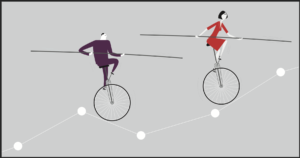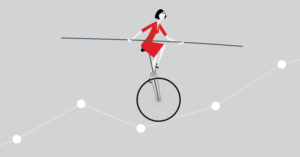
Clients frequently ask me, “Am I the only one?” And, of course, the answer is always no. It doesn’t matter what actions or feelings you fill in at the end of this question; we share the human experience.
Pivots are hard, and the challenges each of us experiences during life transitions are similar. For late-career transitions, the primary questions are:
- How do I stay relevant without becoming overcommitted?
- I want more of a life portfolio, yet I am accustomed to making my professional life the center of my attention.
- How do I break this habit?
- I am afraid of becoming bored. What if I do? Will it be too late to go back?
- Do I really want a portfolio, or do I want a new center of attention? If the latter, how do I keep myself from becoming consumed in the way I was before?
These are hard questions, which is why it takes courage to pivot intentionally and why most people don’t.
We watch professional athletes stay past their prime and participate in the debate about term limits for our congress. Yet, how often do we look inward and debate our own need for term limits?
Before I created the You Pivot™ Program, I was a leadership coach for many years. During my tenure coaching CEOs and other C-Suite executives, only a fraction chose to go on to something new. Many more kept on keeping on, in some cases “after the thrill was gone.”
Yet, in my experience, the people who intentionally choose their path are the happiest. As with most change, the scariest part is beginning.









 The initial results of my Pivot are excellent. I feel I have much greater clarity regarding the next 3-5 years..
The initial results of my Pivot are excellent. I feel I have much greater clarity regarding the next 3-5 years.. 